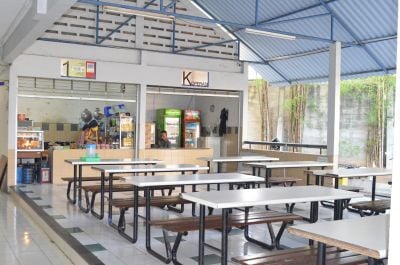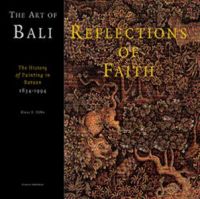Reflections of Faith
- Title
- Reflections of Faith
- Original language
- English
- Author(s)
- Illustrator(s)
- Publisher
- Image Books
- ISBN
- 9073187303
- Publication date
- Subjects
- Find Book
- Bol.com
- Related Env. Initiatives
- Related Places
- Related Biographies
- Related Children's Books
- Related Holidays
- Related Folktales
- Related Comics
- Related Lontar
- Linked words
Description(s)
The art of Bali : the history of painting in Batuan 1834-1994. Why yet another book about Bali, the ‘Island of the Gods’ in the Indonesian Archipelago? The flood of books on this island jewel continues to flow. Many of us fail to realise that today Bali is an up-and-coming economic province in the Republic of Indonesia, rapidly changing, and no longer the independent state eldorado under the special protection of the tourist industry. Indeed, there is more effort put into the task of informing tourists than enlightening the Balinese who, in any case, are so preoccupied with their daily lives that they have little time or interest for what the experts and layman, realists and dreamers ‘from outside’ write about them. And now, another book on Bali appears. This, fortunately, goes beyond the bounds of a mere guidebook for western redership, and is written with understanding and empathy. It therefore represents a contribution to the maintenance of a great artistic tradition and can be used to strengthen the awareness of culture there. Klaus D. Höhn has long ben familiar with the ‘Reflections of faith’ and has written just such a book. For many Balinese their lifestyle is so natural and commonplace that they are unaware of its transitoriness. Anyone who is contributing to culture, continually and creatively, is seldom conscious of the custodian of things created among his painter friends in Batuan and as a conscientious chronicler of Batuan painting. Years of painstaking work have enabled him to create a mosaic which today has taken form and reveals to us a piece of undocumented Balinese culture in the twentieth century. We have in our hands a book that has come into being at the right time, not least for the Balinese themselves who, in the fast-flowing currents of technical and economic change, are coming increasingly to realise the significance of ‘cultural identity’ Over the years, the creation of Balinese art has become a productive motor and, in its qualitative deterioration, simultaneously a victim of the dictates of economic change and the individualistic notions of performance and competition associated with this. The production of handmade artistic goods for markets at home and abroad has become one of the most important areas of productive activity for many people who once, at home in their village studios, lovingly painted and drew Balinese life with its myths, fables and fairy-stories. Balinese painting, as a result of an emphasis on mass-marketing in the service of tourism, now finds itself in a serious crisis, inundated with average art which, because of its mediocrity, dispenses with the need to select. In a market such as this, the distinction between art and kitsch begins to blur. This book insistently draws our attention to the fact that, in spite of the powerful, anonymous art market, in Bali an art scene still exists in which personal communication with artists can take place and where, at the same time, it is possible to experience their social and cultural environment. Klaus D. Höhn is familiar, from long experience, with the nature and development of this scene. His book brings us into contact with the arists themselves and supplies an abundance of detail about Batuan painting, as well as documenting the basis of the art found there. The comprehensive summary of all the artists concerned, and the carefully selected illustrations chosen from all over the world, can also be used in establishing criteria for the judgement and selection of Balinese paintings from Batuan. After all, it is only through contact with discerning customers that the artists can obtain new crative impulses with the consequense that their creativity can remain intact, a creativity which has suffered much from the compulsion to produce and the terms of payment dictated by agents and art dealers. Dr. Urs Ramseyer , Curator at he Museum for Ethonology, Basle, Switzerland. Author of "The Art and Culture of Bali"



Enable comment auto-refresher